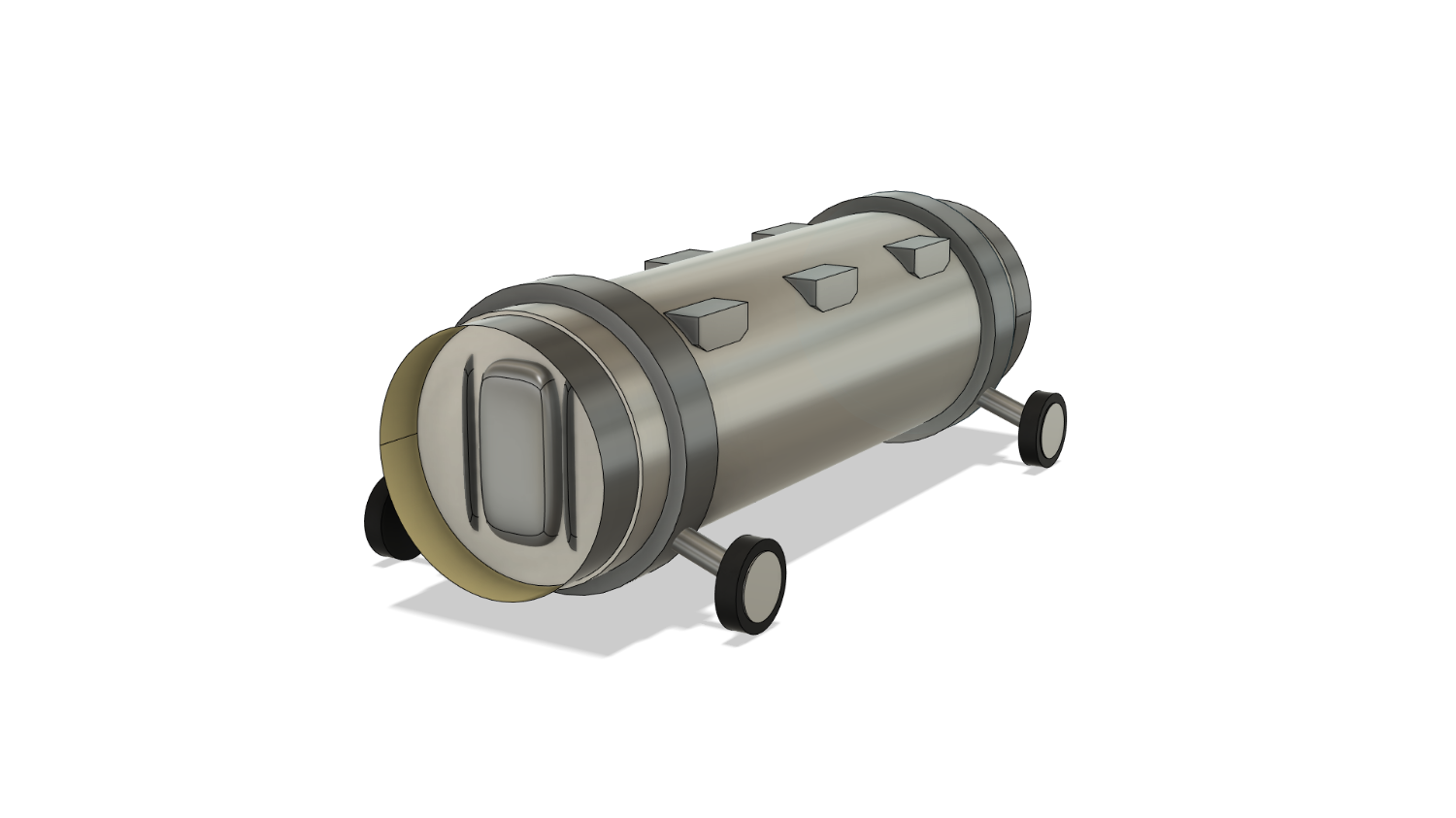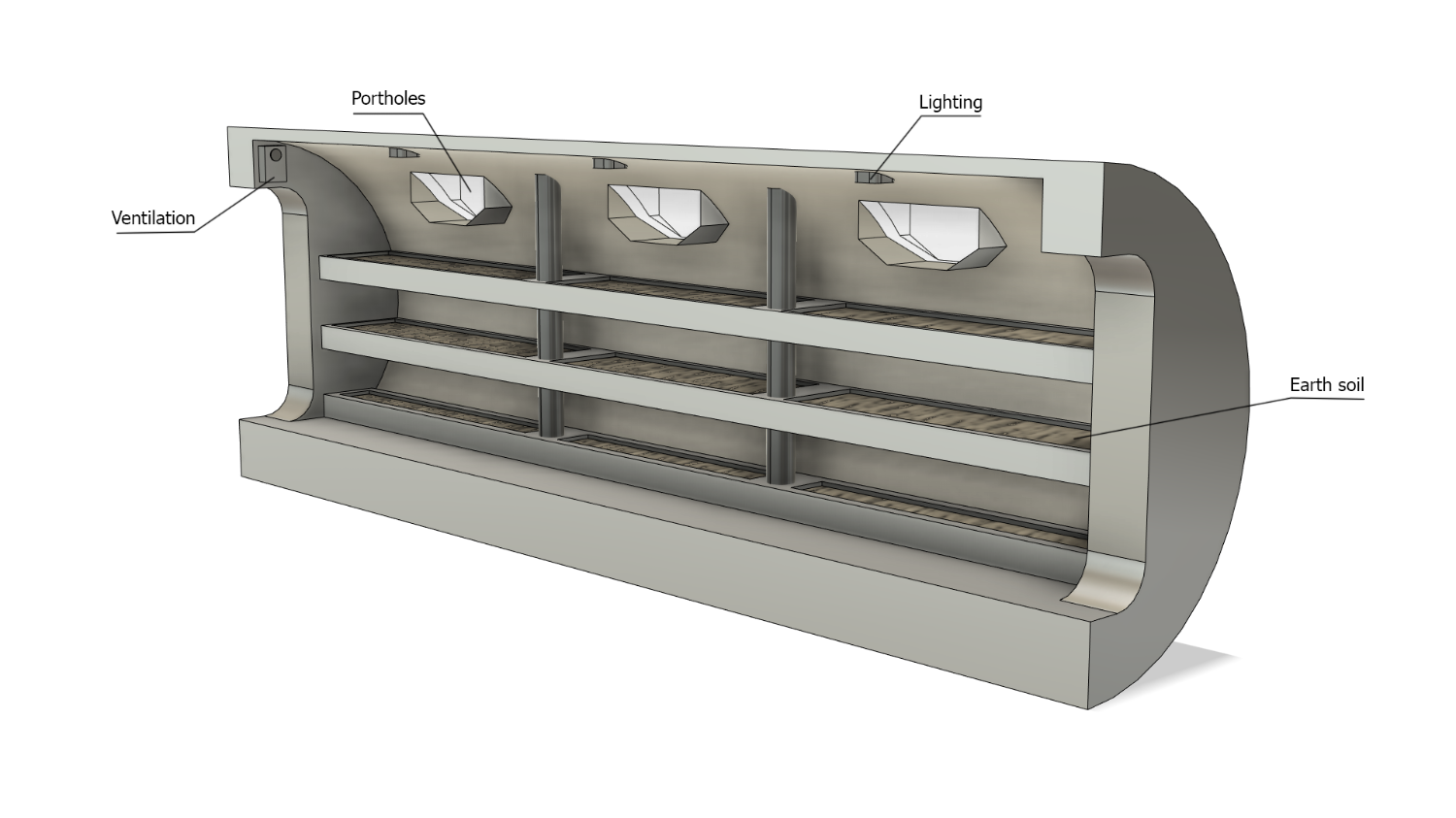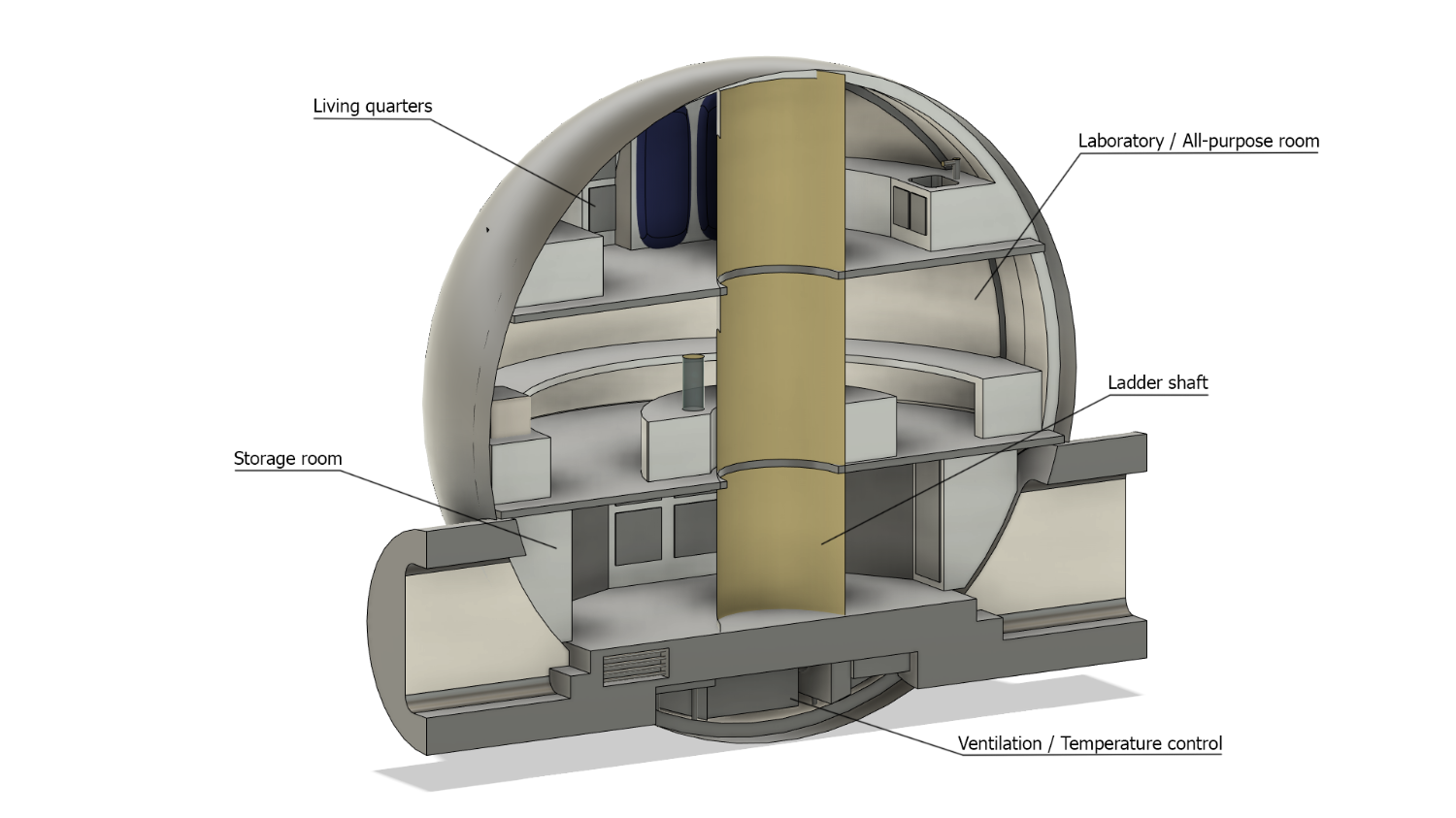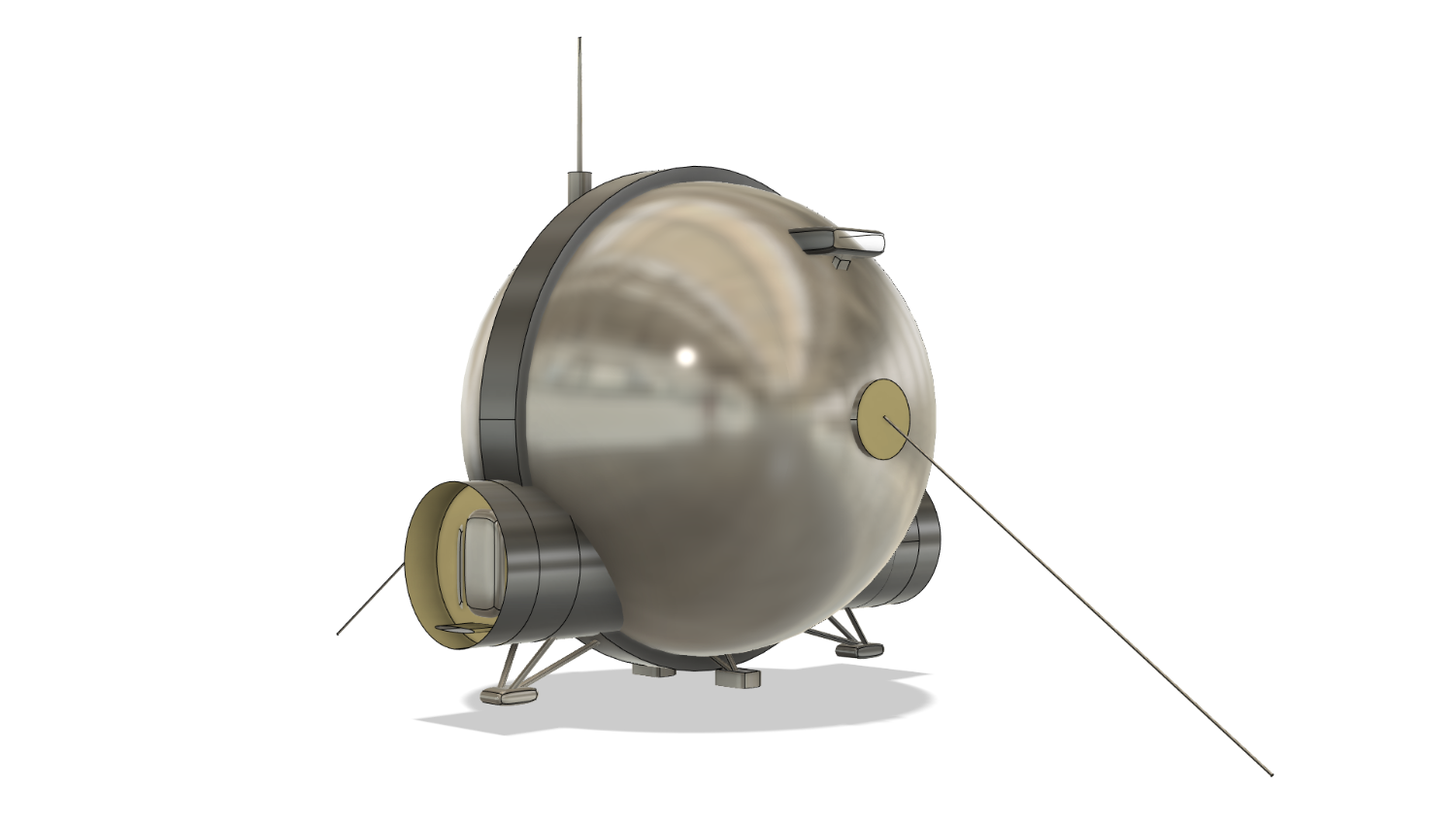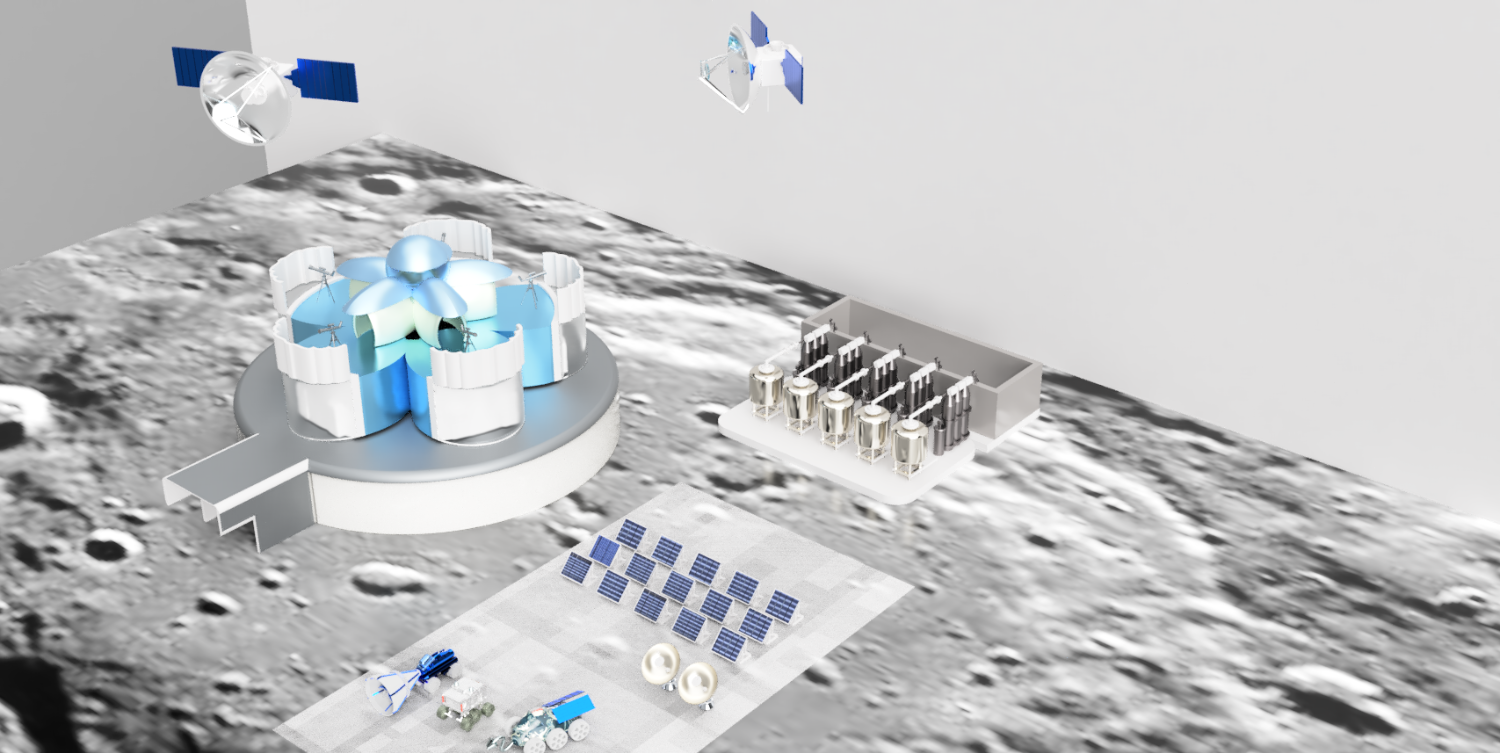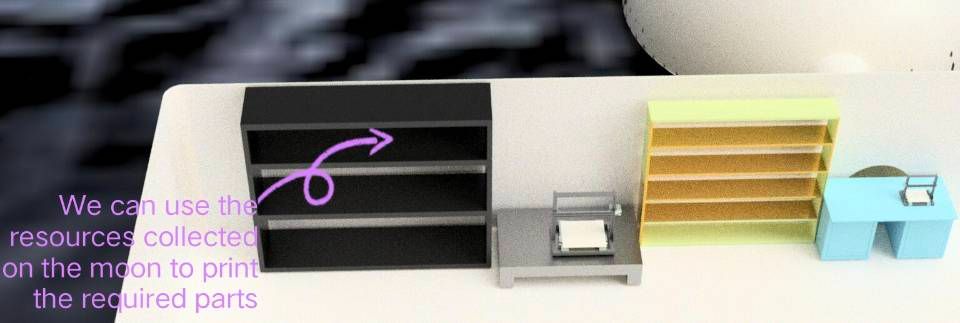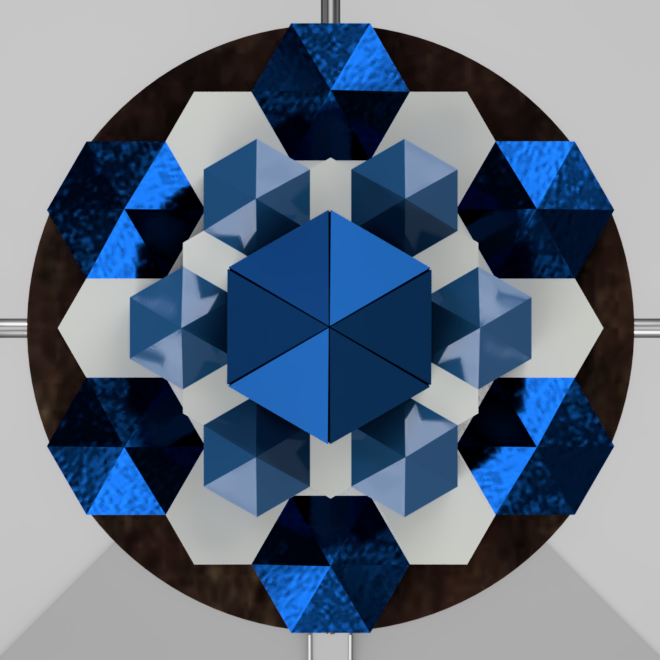Moon Camp Pioneers Gallery 2021-2022
In Moon Camp Pioneers each team’s mission is to 3D design a complete Moon Camp using Fusion 360. They also have to explain how they will use local resources, protect astronauts from the dangerous of space and describe the living and working facilities.
Team: Project “Aeneas”
Secondary school “P. Kr. Yavorov” Plovdiv Bulgaria 15 2 / 0
External viewer for 3d project
|
Project description
The “Aeneas” project utilizes technology that is available today and barely relies on future, yet to come concepts or technological improvements. We made a design for a modular lunar base suitable for two crew members during phase one. Our moon base is designed in such a way to account for maximum payload during transportation, funding, and logistics. The first phase will include the main module that has basic non-self-sustainable functionality like heating, life support systems, training equipment, storage, etc. Therefore, the first several years the base will have to rely on packed supplies. As the project develops more modules could be added. For example, a vegetation module that will allow to grow crops or perhaps a water purification module that will transform lunar ice into drinkable water. The crew will have to be changed every 6 months due to the degrading properties of microgravity on the human body. |
|||
|
2.1 Where do you want to build your Moon Camp?
We believe the best spot for our base will be in a high-altitude location that receives sunlight most of the time and is near the northern pole. Such a site is ideal due to a multitude of factors. Firstly, an area of this type is known to be located near dark, permanently shadowed craters, which could potentially be utilized as a source of lunar ice. Moreover, the temperature in such areas is ideal for human habitation. It is believed to be around -500 Celsius and has little fluctuation. One such location, for example, might be the quasi-sunlit plateau near the Whipple crater. Despite the fact that the plateau receives sunlight nearly 80% of the time, we will still have to deal with the dangers of lunar night-time like extraordinarily low temperatures and lack of solar energy. 2.2 How do you plan to build your Moon Camp? Describe the techniques, materials and your design choices.
The “Aeneas” base will be built using materials that are lightweight, yet at the same time durable. Such materials include Titanium, aluminum, steel, and their respective alloys. One proven material for the internal framework of our base, for example, is 2219-T6 Aluminium alloy, since it is tough, lightweight, and resistant. As mentioned earlier the base will be modular, as each separate component is built on Earth and then delivered to the moon where the modules connect to each other through standardized docking ports. In case the module lands a sizable distance away from the base, every module will be equipped with specialized tires, capable of traversing moon’s surface. The two main shapes of the modules will be spheres and cylinders, due to the pressure difference between the interior and the exterior. The cylinder type modules will be equipped with two standardized ports and the sphere type modules will be equipped with two to three ports depending on the exact configuration. The modules themselves will provide a multitude of enhancements. With time and addition of modules like the vegetation module or the water purification module the base might become more self-sufficient. Such a structure also makes possible the addition of many research modules that could have different equipment suitable for different needs. Potentially the base could be expanded with modules designed to increase the crew capacity or perhaps treat crew morale. 2.3 The environment on the Moon is very dangerous for the astronauts. Explain how your Moon Camp will protect them. (maximum 150 words)
Our two main environmental concerns are the temperature and radiation. As mentioned earlier nights will still be present and we will have to account for temperatures up to – 150 0C or even – 180 0C. The insulation will be situated between the exterior and the interior and will be made of several layers of different thermal insulators, like polyethylene foam or polyurethane foam. Apart from that a thin layer of aerogel will be situated between the interior and the last foam layer. Such a mixture of insulators will protect the astronauts from low temperatures as well as cosmic radiation. Our team realizes that such a coating of aerogel might prove to be rather costly. Nevertheless, we believe that it will be worth it as better insulation will greatly reduce the amount of electricity used for temperature control. |
|||
|
2.4 Explain how your Moon Camp will provide the astronauts with:
|
Water
|
Food
|
Power
|
Air
|
|
The second module to arrive will be the water purifying module. It will not only be used as a source of drinkable water but also will provide samples for chemical analysis. After analysis the water can be treated through Electrocoagulation, that is fine tuned to the chemicals and metals found in that specific probe of lunar ice. After this process it will be a matter of separating the unwanted materials from the water through filtration. Based on our previous knowledge of lunar ice and the efficiency rates of the filtering process we believe that it is possible to use some of the water for sanitation. |
With the arrival of the vegetation module, it will be possible to grow enough crops to partly sustain the crew. Development of a module suited for seafood is possible but will have to be done at a later stage of the project. If it is made however, this will not only deem the base completely self – sustainable in terms of food but will also make the expansion of the crew possible as the need for delivering non-perishable foods will no longer exist, consequentially optimizing available space for delivery. |
Due to the light rich nature of our chosen landing site, solar power will be the main source of energy and will be a part of the initial launch along with the first module and supplies. In spite of the fact that the area will have access to sunlight nearly 80% of the time we still have to account for lunar nights. Due to the reduced dark hours, it will be sufficient to charge batteries designed to supply the base with power. With the expansion of the base however, it will be necessary to increase the number of solar panels and batteries so as to meet the increasing electricity demands. |
On the first stages the oxygen will have to be imported from Earth. We went through many ways to create air, but in most cases, we get pure or nearly pure oxygen which is insufficient for breathing. Breathable air mostly consists of compounds that can be acquired on the moon. Oxygen and water vapor can be acquired through electrolysis of lunar ice and carbon dioxide can be acquired from our astronauts as waste. Our biggest problem with creating air on the moon is nitrogen as it’s the main ingredient for air and is also the most complicated to obtain. It’s concentration in the moon atmosphere is insufficient and the only way to obtain it is through heating lunar regolith to extreme temperatures. This will separate the nitrogen from the regolith and after mixing the gasses we will get an air like compound suitable for breathing. |
|
2.5 Explain what would be the main purpose of your Moon Camp.
The main purpose of “Aeneas” is to conduct scientific studies aimed to develop potential long-term habitation on the moon. The project is the first step to a completely self-sustainable permanent lunar settlement. A major concern of the base will be the effects of enclosed spaces and microgravity on the body and mind. One of the goals of the project will be to develop solutions to these problems as to allow future permanent settlement on the moon. A secondary goal of the base will be gathering data about the moon and conduct research that would otherwise be rather complicated to achieve, periodic sample collection for example. |
|||
|
3.1 Describe a day on the Moon for your Moon Camp astronaut crew.
As the aluminum shutters open and the night lighting turns off, the room is filled with soft and warm light. An alarm rings and the outside temperature is displayed on a screen opposite the crews sleeping bags. As both of them make their way to the opposite side of the room for their breakfast and a bag of coffee. After twenty minutes they go to their assigned modules for the day. They make their way through the tough airtight doors into the cuboid shaped room and conduct a short maintenance to ensure workplace safety. Both begin their 6,5 to 7,5 hour-long workday. As lunchtime approaches both meet in the living quarters of the main module and get to enjoy a meal comprised of food from Earth and locally gathered crops. In the second part of the day, it would be best for at least one of them to change their activity. For example, if in the ‘morning’ they analyzed lunar ice samples then in the ‘afternoon’ they could do some gardening in the vegetation module or perhaps conduct the weekly large scale maintenance check. At the end of each day however, both meet up together once again for two hours of exercise. It is essential for such prolonged exposure to micro gravity, as regular exercise will help decelerate the rate of bone density reduction. It will also be rather common for the crew to go outside be it for gathering samples of soil and ice or maintenance. At the end of each day the astronauts have lunch and some spare time depending on their exact work schedule that day. As the aluminum shutters close for the next 8 hours and the only thing illuminating the room are dim LED lights. Nothing but the constant humming of the ventilation can be heard as both of the crew members fall asleep. |
|||


